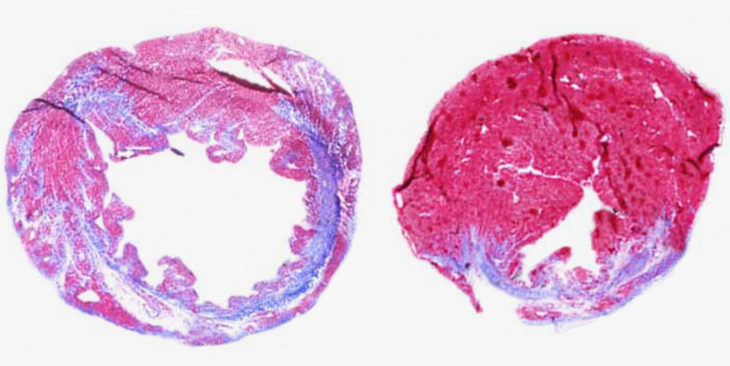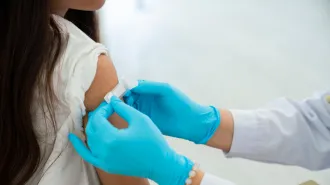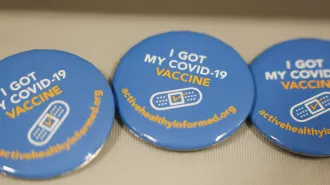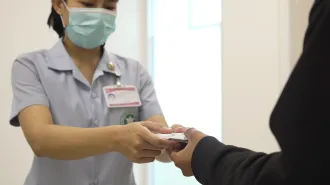A patch studded with tiny needles may help heart attack survivors recover
The bandage exudes proteins and other molecules that promote muscle cell growth
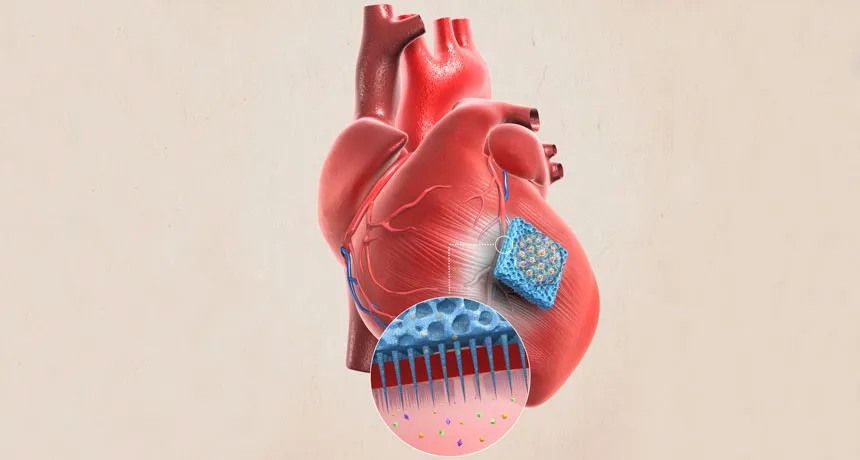
PATCHED UP A new microneedle patch (illustrated in blue) that latches onto the surface of the heart could deliver therapeutic molecules to damaged tissue in heart attack survivors.
Ke Cheng, Zhen Gu
